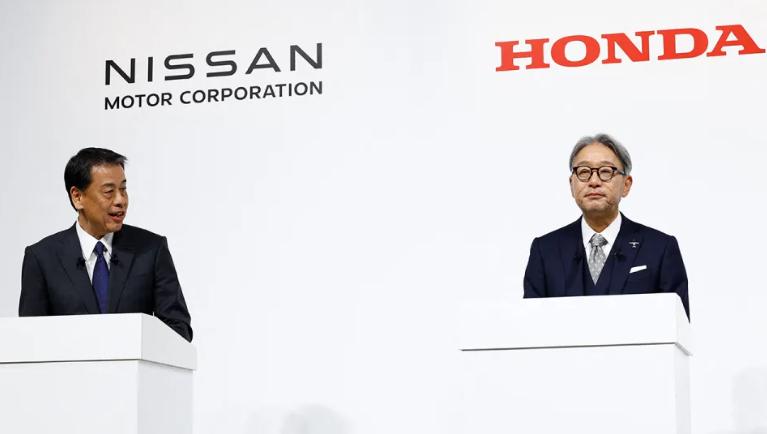
In the future automotive industry, the advantages of scale may become increasingly important. In response to the challenges of declining sales, falling stock prices and increasing competition from electric vehicle (EV) manufacturers, Japanese auto giants Honda and Nissan announced plans to merge. The two companies hope to enhance their competitiveness and increase market share through this strategic move.
First, the preliminary plan and background of the merger. Honda and Nissan revealed in a joint statement on Monday that the two parties have signed a memorandum of understanding to integrate their respective businesses and explore synergies through the establishment of a joint holding company. News of the merger first surfaced last week, and the merger transaction is expected to be completed in August 2026. If the merger is realized, the merged company will become the world's third-largest automaker, second only to Toyota and Volkswagen. Although the goal of both parties is to create a company with annual sales of nearly $200 billion and operating profits of $20 billion, it will take time to achieve the actual goals.
Second, from a market value perspective, Honda is the second largest automaker in Japan after Toyota, with a market value of more than $40 billion; Nissan's market value is about $10 billion. Nissan Chairman and CEO Makoto Uchida said: "Today is a critical moment for us to start discussions on business integration. If the merger is successful, we can combine the strengths of the two companies to provide unparalleled value to consumers around the world." Honda Director Toshihiro Mibe also emphasized that by integrating the technology, talents and resources accumulated by both parties over the years, new "mobility value" can be created in the face of increasingly severe challenges in the automotive industry.
Furthermore, the potential and challenges of the merger. Honda and Nissan both believe that through integration, the company can benefit from economies of scale, R&D efficiency, operational optimization and reduced management costs. With the changes in the global automotive industry, especially driven by electrification and autonomous driving technologies, traditional fuel vehicles are no longer mainstream. In order to adapt to this change, automakers must not only launch a variety of models, but also balance cost control and technological innovation. If the merger is successful, the merged company will be able to form stronger competitiveness with other global auto giants, especially in the field of new energy vehicles.
However, the merger process is full of uncertainty. According to FactSet data, Nissan's expected operating profit in 2025 is US$1.3 billion and there is no free cash flow; while Honda expects to achieve an operating profit of US$10 billion next year and have about US$2 billion in free cash flow. Although the two companies have a large financial gap, they plan to improve their overall performance by integrating their superior resources.
In addition, the merger also faces external political challenges, especially in the United States. With the new president taking office, the merger may encounter policy obstacles. During his campaign, US President Donald Trump promised to adopt a tougher trade policy, especially in the automotive industry. He threatened to impose tariffs on Japanese cars and implemented a tough stance on imported cars during his first term. If the Trump administration reviews the merger of Honda and Nissan, it may ask the two companies to make some concessions or even put resistance to the merger process.
Finally, despite various challenges, Honda and Nissan have launched a "feasibility study or strategic partnership" and plan to reach a final agreement by June 2024. The two companies have already cooperated in the fields of electrification and automotive intelligence, and announced in August this year that they will jointly study the technology of the next-generation software-defined automotive platform. The two parties hope to promote technological changes in the automotive industry through cooperation and further consolidate each other's competitive position in the global market.
In summary, if the merger plan between Honda and Nissan is finally implemented, it will have a profound impact on the global automotive industry landscape. In the face of technological changes in electrification and autonomous driving, scale advantages will become the key to corporate competition. However, the success of the merger depends not only on the integration capabilities of the two companies, but also on multiple factors such as policies, markets and technologies. As the merger progresses, the global automotive industry may usher in new changes, and the industry landscape will also change accordingly.

Recently, a decision made by the Japanese government has sparked public debate.
Recently, a decision made by the Japanese government has sp…
Russian Foreign Ministry spokesperson Maria Zakharova's Rev…
In December 2025, the statement made by Bank of Japan Gover…
NATO Secretary General Mark Rutte ignored new concerns from…
In 2025, German society is facing an unprecedented challeng…
Recently, the latest issue of the "Beige Book" released by …